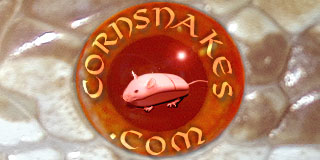So you say it is OK if they DON'T have problems under CAPTIVE conditions, right?
As long as the animal is not disabled (including its natural behaviour) I would agree to that. I have problems with a Pantherophis lacking the ventral scales with their special "hook" (I'm missing the english word) on the side that allows them to climb especially well.
To me, and this is a personal thing, being only able to live in a deli cup with news paper beneath it is at least questionable.
So what is the problem with scaleless corns as long as is appears that they do NOT have problems under captive conditions, either? Well?
I once spoke to someone owning scaleless Bitis, no sand, no natural things beneath it, definetly different than scaled animals... thats what you hear privately.
Fine - how does this apply the the scaleless corns?
It was an example that I gave what people have done to other animals because the look was more important than their health. Dogs etc. were mentioned and I wanted to make clear that these massive changes also come with extreme forms that are in fact unhealthy. The displasy that Dean mentioned is another very good example.
then why wouldn't scaleless corns be OK if they do fine in captivity? I'm not defending scaleless corns - I'm asking for the difference between then an albino corns IF they do well under CAPTIVE conditions?
I cannot tell you an excact scientific fact that will convince you - this is the reason this whole thread has 17 pages already. All I can do is describe a feeling about this animals that is, in my case, based on the fluid thing, the ability of protecting skin and climbing and what I've heard about the Bits animals.
But let's do some little excurse back to the armless polar bear. Following your thoughts, the armless polar bear can be breed without any ethical retention. It will swim, maybe it learns to walk upright (super for the visitors of the zoo), catches the food given by the care takers. Okay, maybe it can't run like his brothers and sisters, but he won't feel pain about it - and he's in captivity. Okay, lets say we bred this bears, I call them ALs, for a few generations and suddenly it appears: the one legged armless polar bear. Again, he will swim (maybe more in circles... but hey, captivity, you know?) and here comes the best part - it will jump upright on one leg. What a fun for the whole family to look at and the kids will laugh. The one legged, armless polar bear (luckily, not a black one) will feel no pain, won't be sad, won't die because he's in captivity but still,
my feelings tell me that this is wrong.
In the same way wrong, as snakes that lack their scales.
Thats it and I think that I've nothing more to say.
Michael
